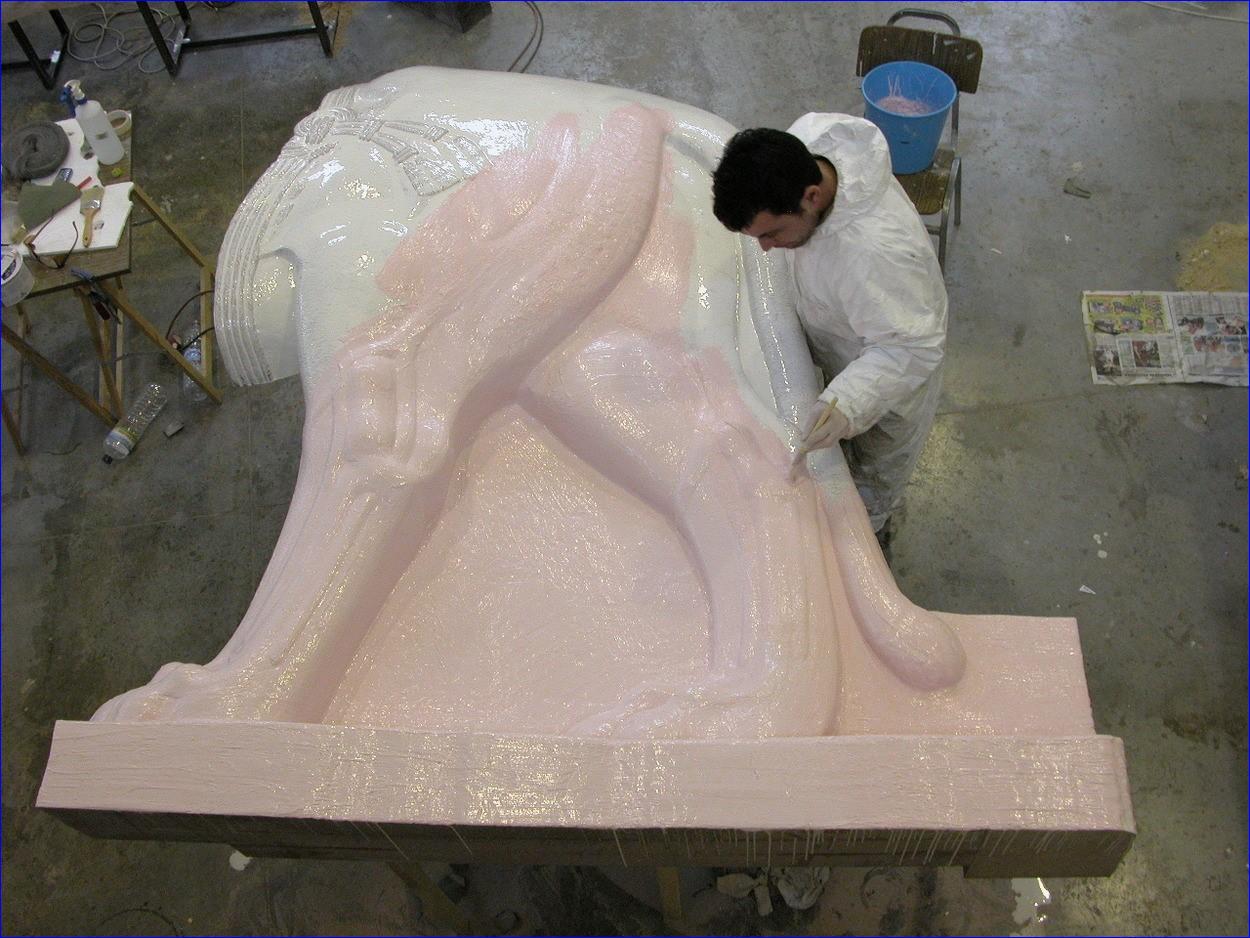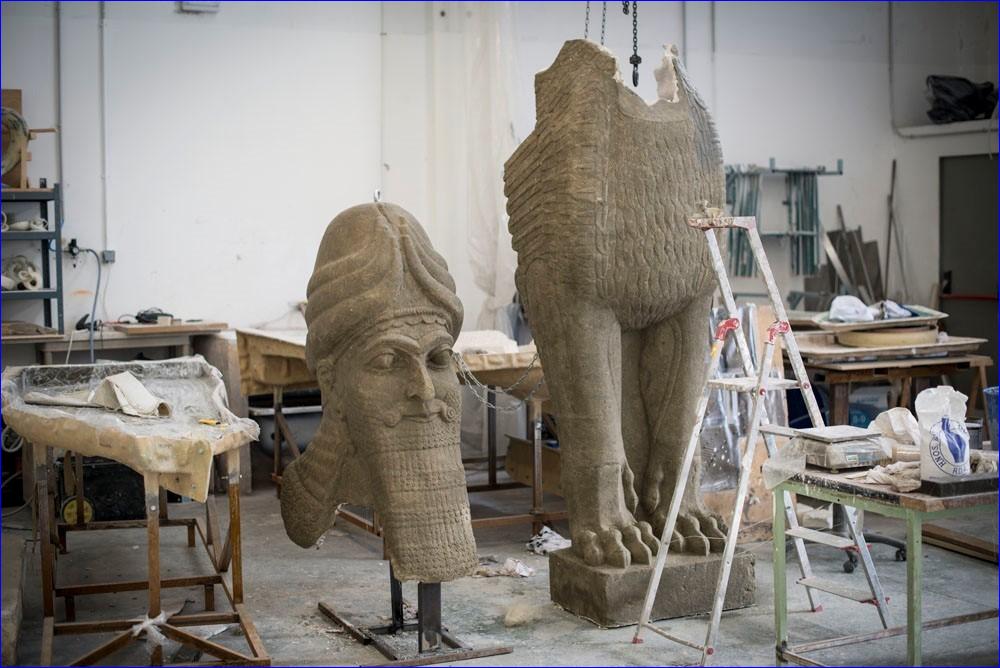


 Factum Foundation)
Factum Foundation)
The lamassu statues are exact replicas of two originals held at the British Museum in London, where they were taken by the archaeologist and historian Sir Austen Henry Layard in 1850. But long before Layard's intervention, they stood guard at the gates of the Assyrian city of Nineveh.
Between 705--681 BCE, Nineveh was transformed by Assyrian King Sennacherib into a grand metropolis, dominated by a palace flanked by lamassu statues. Part human, part animal, and carved from limestone or gypsum, lamassu were an important part of Assyrian culture.
Of course, the replicas are just that, with the originals housed far from their birthplace. Tensions around housing of historical artefacts in foreign museums raise complicated questions about ownership. Consider, for example, a report commissioned last year by French President Emmanuel Macron, which recommended that art taken from sub-Saharan Africa be permanently returned.
An ambitious rebuilding project
In 2004, the British Museum's lamassu were scanned and recorded in detail by the Madrid-based Factum Arte, now part of the Factum Foundation, using a high-resolution scanner.
They also tested and sampled composition, colour, and texture to determine the materials to use in the creation of the copies -- a type of stucco marble that gives the replicas the most accurate possible finish.

 Factum Foundation)
Factum Foundation)
Piece by piece, each of the colossal figures was assembled from polyurethane sections to create a finished prototype. Once the team was satisfied that the copy was accurate to the last detail, it was covered in layers of silicone and bound together with a supporting fibreglass jacket to create a mould.
The moulds were then finished with a layer of wax, to add to their authentic appearance.
A grand homecoming
The Spanish Air Force helped transport the statues to their new home. First stop -- Baghdad. After that, the Iraqi government assumed responsibility for the journey to Mosul, around 400 kilometres north of the capital.
Specialist packing crates had been created with financial support from the Dutch National Museum of Antiquities. Once on-site at Mosul, it took three days to reassemble the lamassu facsimiles, which were unveiled in October 2019.
The Factum Foundation had, according to a spokesperson, intended to record artefacts at Nineveh, but the project could not go ahead due to instability in the region. However, the next phase of this scheme will be to teach students from the University of Mosul to use 3D recording tools and techniques.

 Factum Foundation)
Factum Foundation)
Replicas for reconstruction
This Middle East political instability highlights one of the great benefits of the technology -- reconstruction and preservation in one of the world's most volatile, but also historically-rich, regions.
Consider the damage that Islamic State did across the Middle East. When the Iraqi army was driven out of Mosul, a campaign of destruction began.

 Factum Foundation)
Factum Foundation)
Thousands of books were burned outside the main student entrance of the University of Mosul, where the new lamassu facsimiles will stand. The insurgents also destroyed many ancient statues, including a different lamassu at the Nergal Gate entrance to nearby Nineveh, and much of the historic site of Nimrud, which was attacked in 2016.
Then UNESCO Director General Irina Bokova described the events as among the "most devastating acts of destruction of library collections in human history."

or register to post a comment.